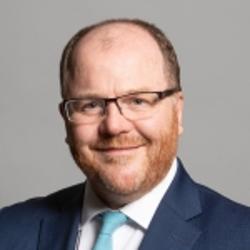Prescription Drugs
(asked on 17th November 2014) - View SourceQuestion to the Department of Health and Social Care:
To ask the Secretary of State for Health, how many licences were sought for off-patent medicines in each of the last three years; and by whom each such licence was sought.
The Medicines and Healthcare products Regulatory Agency (MHRA) is responsible for the regulation of medicines in the United Kingdom. Innovative medicines (new drugs or innovative presentations) are expected to be protected by patents to prevent them from being copied. MHRA does not have access to information on patents but is able to determine when the 10 year period of data exclusivity (protection) expires after a marketing authorisation for a substance of a product is first granted. After that time subsequent applicants are able to use the innovator product as a ‘reference medicinal product’ and submit abbreviated applications for the same or similar products in accordance with articles 10(1), 10(3) and 10(4) of directive 2001/83/EC on medicinal products for human use. These products are generally referred to as generic medicines or, (if they are biological medicines) biosimilar medicines.
Sub-article 10a provides for applications to be made for products which have been shown to be in well-established use for 10 years and sub-article 10c provides for applications where the holder of the original authorisation permits cross-referral in full to the set of original data.
In all these cases it is expected that the original patent would have expired but any patent challenge would take place independently and outside of the medicines licensing procedures.
Licensed off-patent medicines are not the same as off-label medicines. An “off-label” medicine is any medicine prescribed outside the terms of its licence (as set out in the prescribing information in the Summary of product Characteristics). Medicines legislation permits prescribers to prescribe a product outside the terms of its licence where they judge it to be in the best interests of the patient to address a medical need. For example to prescribe for a different use or to different category of patients but in doing so the prescriber takes personal responsibility for the treatment, inform the patient(s) of the licensing status of the product and obtain consent from the patient for its use.
The following tables and accompanying lists relate to applications received by MHRA under any of the provisions of article 10 of 2001/83/EC but may not be comprehensive lists as applications for off-patent products may also be made under other articles. The lists do not include products authorised through the centralised procedure of the European Medicines Agency.
Applications received by MHRA under Article 10 of 2001/83/EC
Year | Number of Applications received |
2012 | 947 |
2013 | 861 |
2014 to 19 November 2014 | 1007 |
In the accompanying lists full details are provided of the applications sought which have been granted or granted and subsequently cancelled. The totals at the bottom of each worksheet are the total number of product licenses. There are more rows of data than licences because products with multiple licensed product names or more than one active ingredient appear on more than one row. Pending, withdrawn and refused applications are excluded to protect commercial confidentiality.

